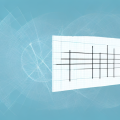Synthetic division is a technique often used in algebra to divide polynomials. It is a simplified version of the traditional long division process and can cut down on long and tedious calculations. While synthetic division can be challenging, this article will explain the process in detail, from understanding the steps to applying them and mastering the technique. We also provide tips for solving problems quickly, common mistakes to avoid and troubleshooting strategies for difficult problems.
An Overview of Synthetic Division
At its core, synthetic division is a process used to divide two polynomials (the dividend and the divisor) quickly and efficiently. This process is best used with linear factored divisors, meaning “n” divided by “(x-a)”. The rule of thumb is that the numerical coefficient of the highest degree term must be one (1). The result of synthetic division contains two parts; the quotient polynomial and the remainder.
The quotient polynomial is the result of the division, and the remainder is the amount that is left over after the division. The remainder is usually expressed as a fraction, and it is important to remember that the remainder is always less than the divisor. Synthetic division is a useful tool for quickly solving polynomial equations, and it can be used to solve equations with multiple variables. It is also useful for finding the roots of polynomials, as it can quickly determine the factors of a polynomial.
Understanding the Synthetic Division Process
The division process takes four steps and requires focussing on the degree of the terms in the polynomial. To begin, note the numerical coefficient of the highest degree term and write it on the left side of the division process. Moving from the highest degree term to the least, write out each numerical coefficient in descending degree order and place them in a row on the left side. Then, draw a line below the last row. These coefficients above and below this line represent the dividend polynomial. Underneath the coefficients and above the line are the constants, or coefficients outside of x, representing the divisor.
Applying the Steps of Synthetic Division
The first part of synthetic division is to divide the numerical coefficient of the highest degree term with the constant coefficient of “a”. This result and the constant are then added together and the result is placed beneath the highest degree term’s numerical coefficient. Next, each numerical coefficient above the line is divided by that result, until all terms are divided. The final value written down represents the quotient and any remaining number, not divided, represents the remainder.
Tips for Solving Synthetic Division Problems Quickly
In order to solve synthetic division problems quickly, you must be able to focus on the individual steps of the process. To help with this, it can be beneficial to draw a visual chart with boxes, or use specialised tools such as calculators or even software programs. Additionally, memorising common practice problems can be beneficial for mastering synthetic division.
Advantages and Disadvantages of Using Synthetic Division
Using synthetic division comes with its own advantages and disadvantages. On one hand, it is an easier and quicker method for dividing polynomials than long division, allowing for time-saving operations. However, it requires more focus on details than traditional division techniques, because it is more reliant on patterns than most operations. Also note that when dealing with large polynomial equations, synthetic division may be more complicated than long division.
Common Mistakes to Avoid When Solving Synthetic Division Problems
When solving synthetic division problems you should be careful to avoid a few common mistakes. Many learners make errors in counting terms or which degree of terms are being used, so it is important to double check all calculations. Neglecting to remember that x multiplied by a number is equal to that number is another frequent mistake; make sure to note when this occurs. Finally, forgetting to simplify terms is an issue for many; careful work will help you avoid this snag.
Troubleshooting Strategies for Difficult Problems
For more difficult problems, there are troubleshooting strategies available. If you are having trouble with calculating the divisor, consider trying a different approach such as using a visual method or double checking your calculations. If you are getting confused by the numbers in each row, it may help to break down each value into separate rows for each coefficient in order to better understand how life works. Additionally, you can browse online resources for more detailed explanations or worksheets for practice.
Conclusion: The Benefits of Using Synthetic Division
Synthetic division is an easier and quicker alternative to traditional long division when dividing polynomials. While it may require more focus than regular division due to its reliance on patterns, it can drastically reduce time-consuming operations. This article has outlined an overview of the steps involved in synthetic division, as well as tips for solving problems quickly, common mistakes to avoid and troubleshooting techniques for more difficult problems. In conclusion, understanding synthetic division can be beneficial for tackling any related algebra problems efficiently.





